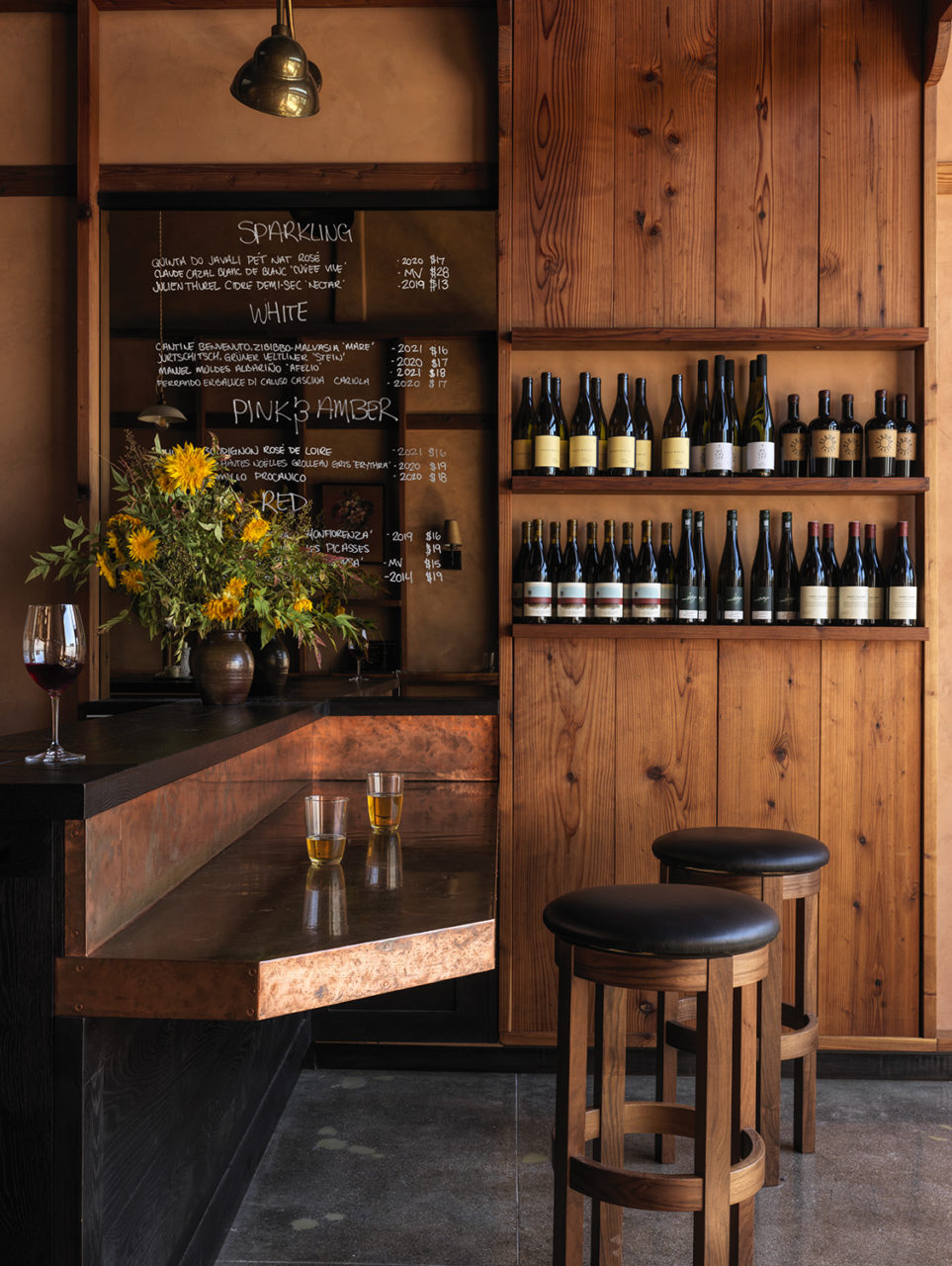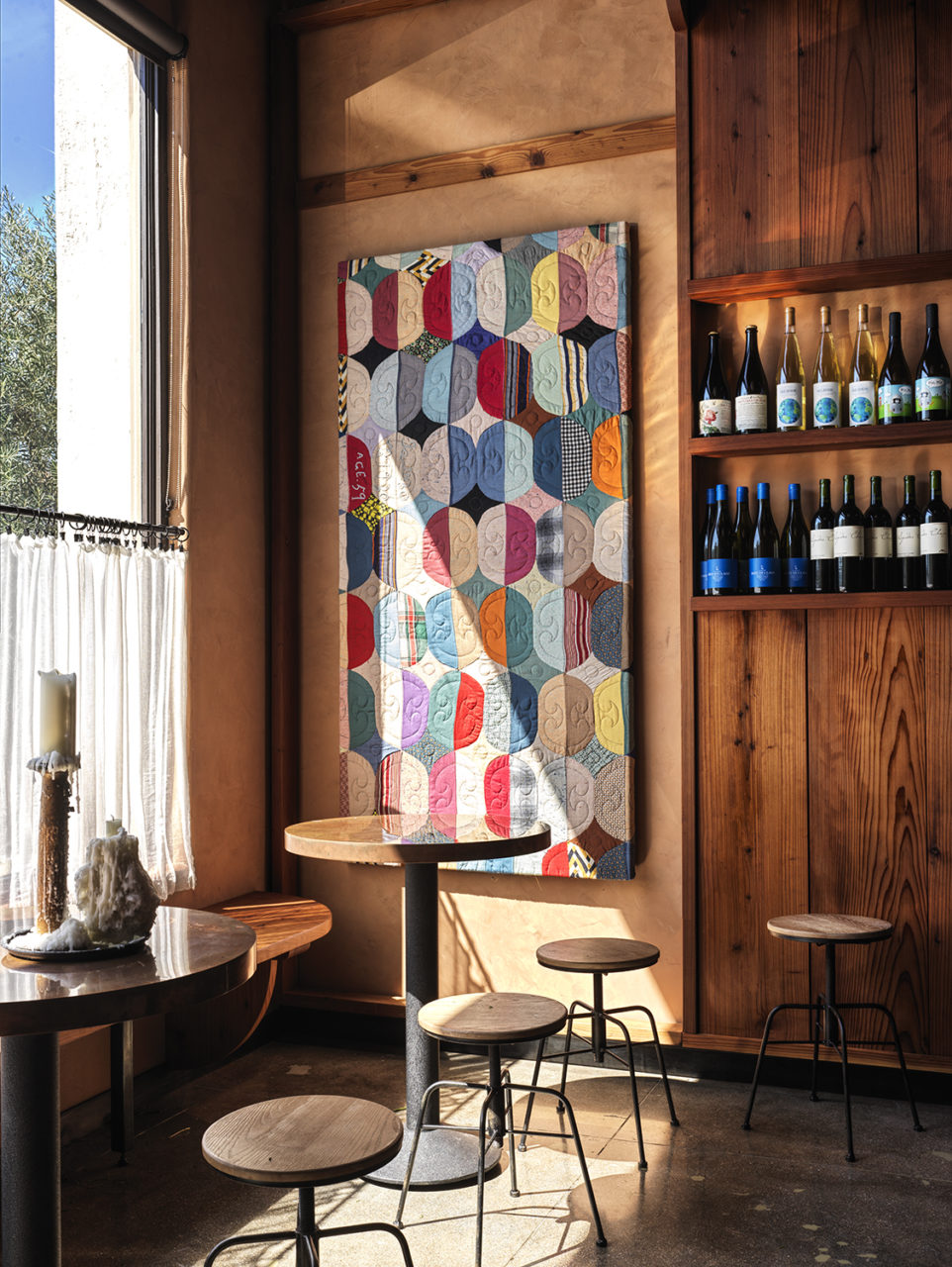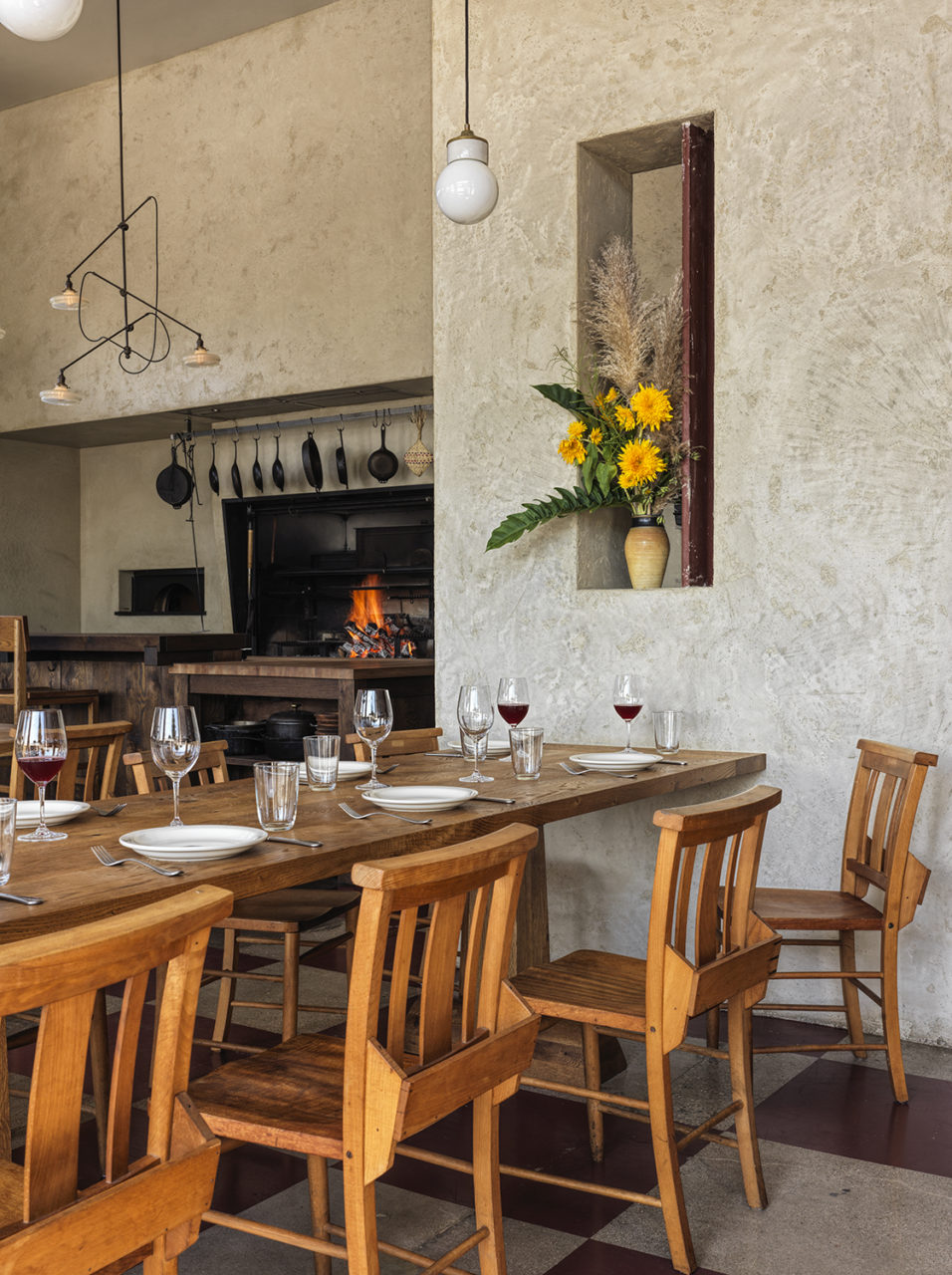Eagle Rock Boulevard climbs up from the Los Angeles River between two rippling hills and bends next to the Glendale Freeway before terminating in its eponymous neighborhood. In Glassell Park, one encounters the typical diverse stock of roadside America: car lots, strip malls, thrift stores, lines of condos, self-storage facilities, and churches of every denomination, here under the watchful eye of palm-tree sentinels.
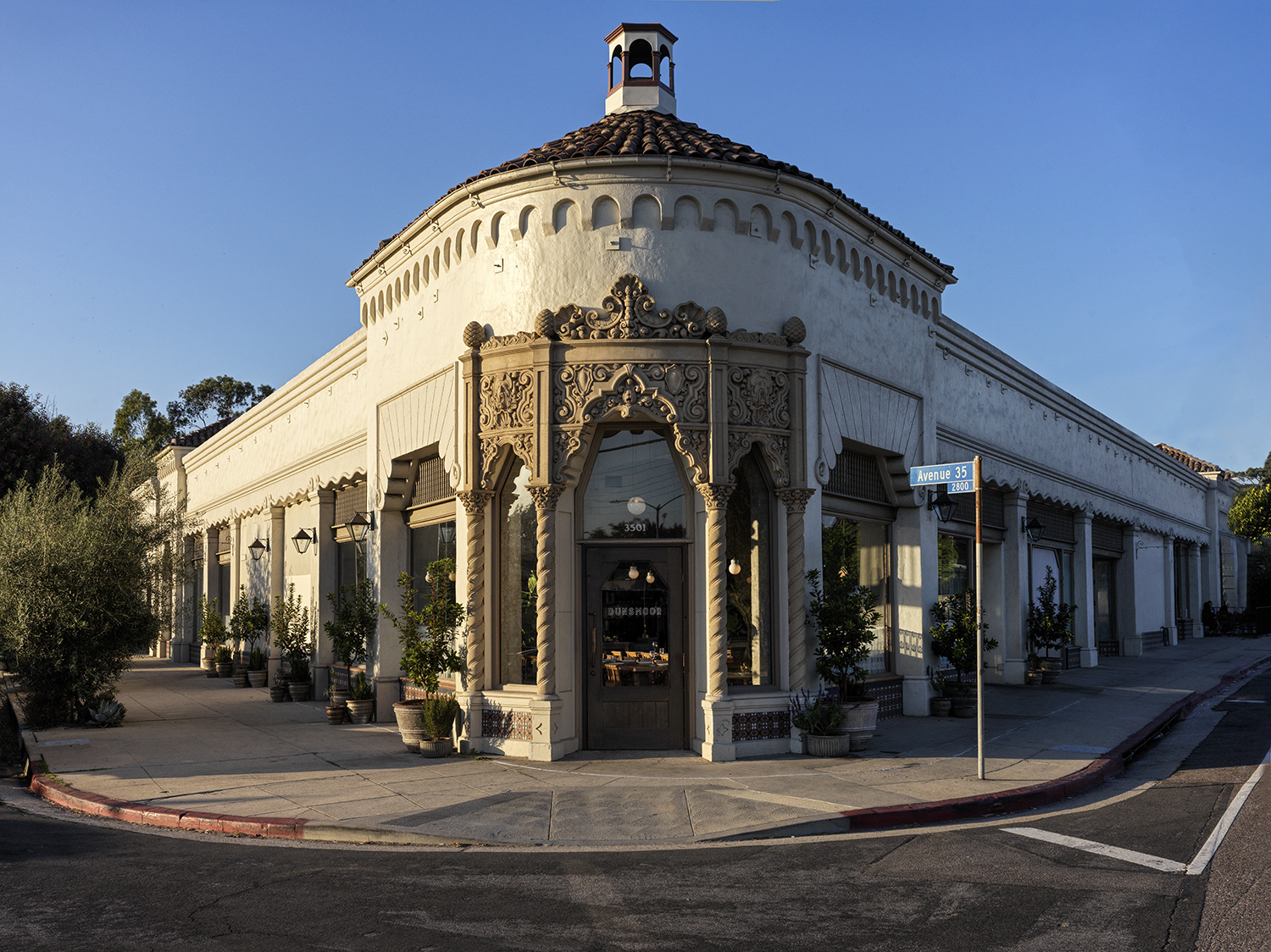
Along the way, one passes an eclectic vision, a restored 1929 Spanish Revival building that used to house a branch bank and, later, studios for artists. Its rounded corner is accented by an ornate entryway guarded by four spiralized, Solomonic columns; above the scrollwork, each is topped by a pineapple finial. Beyond, the mottled plaster exterior is capped by a roof surfaced in terra-cotta tiles.
The scene is an ideal place for chef Brian Dunsmoor to make his mark on Los Angeles’s culinary landscape with his eponymous restaurant. Dunsmoor (the person) is schooled in the cooking of early America and built his expertise from collections of historic cookbooks, family recipes, and extensive personal writing about techniques like hand-milling grains, cooking over open flames, and pickling, among others. Previously he was the founding chef for Hatchet Hall in Culver City, an establishment that focuses on wood-fire cookery.
Dunsmoor (the restaurant) was designed by Lovers Unite, an L.A.-based practice led by Karen Spector and Alan Koch. Its design prominently features the life of the kitchen, with an open hearth on view to guests who might feel as if they’re at a big family gathering or Sunday supper. Lovers Unite told AN the overall feeling is “gracious and hardworking.”
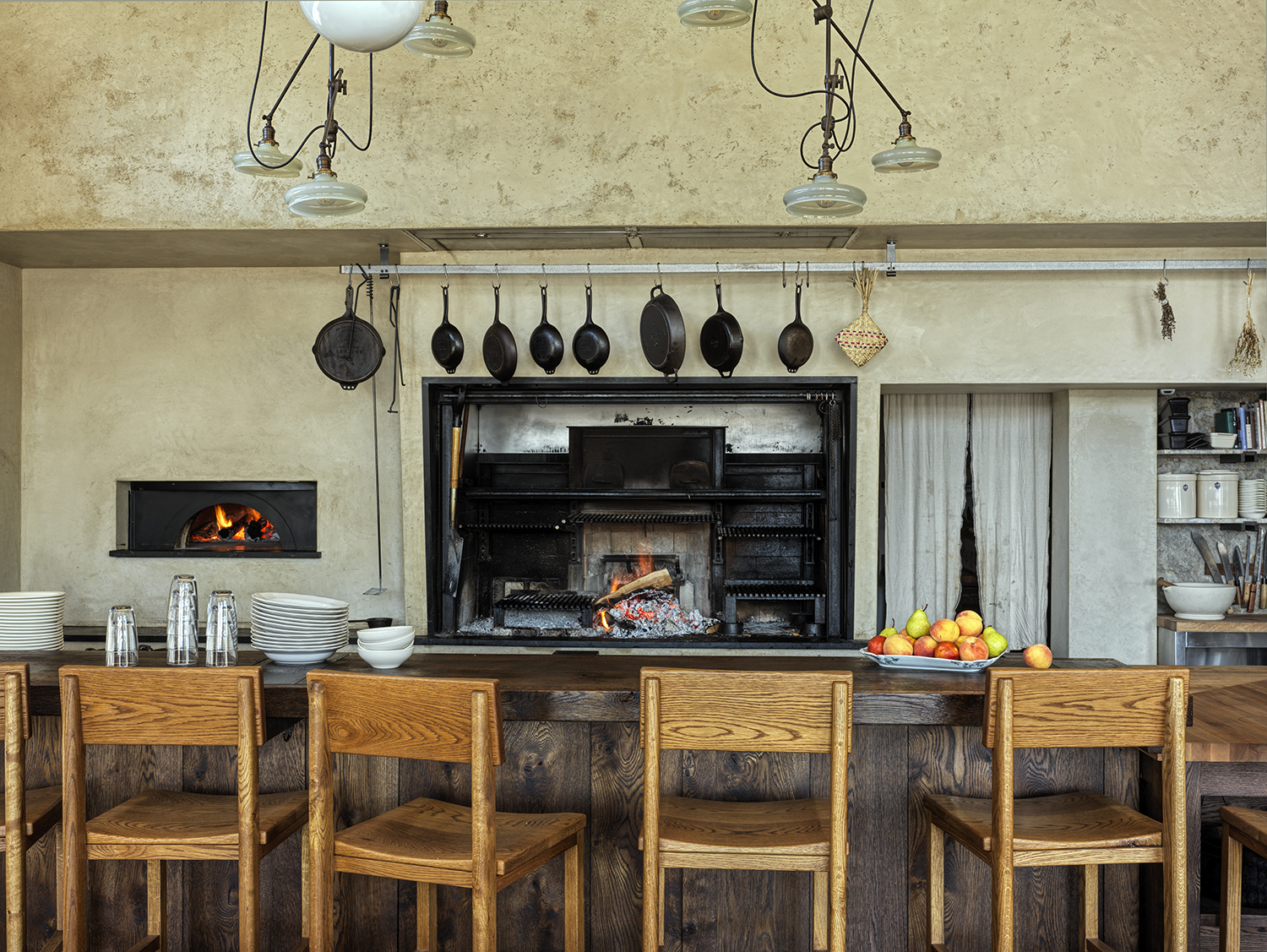
True to claim, the interior is warm, approachable, and textured. A background wall of new plaster and existing exposed brick is fronted by custom millwork and tables designed by Lovers Unite (and fabricated by Dusk, a local woodworking outfit). These pieces mingle with antique pieces like salvaged church chairs. Other touches establish a familiar, lived-in feeling, from custom light fixtures to paintings from the 1930s and ’40s. A separate wine bar, finished with a walnut counter, redwood shelves, and rust-colored walls, offers a secluded second space.
The designers wanted to give the chef a “space that reflected his values of authenticity and community and also his passion.” Like Dunsmoor’s approach to cooking, Lovers Unite engaged with “the character of the historic building in an interpretative way.” Spector and Koch likened this effort to their wider approach: They work “collaboratively with the client to unearth the personality of the project and marry materials to space and light,” which, in the end, “creates something at once familiar and new.”

